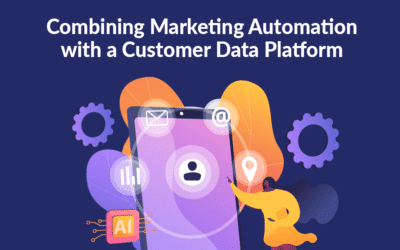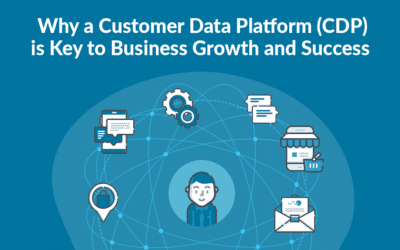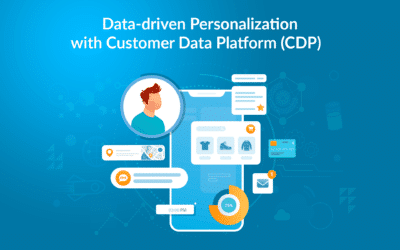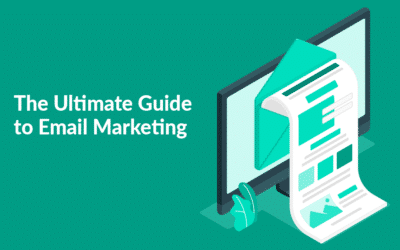Customer loyalty is a topic every company has some kind of focus on. But how do companies achieve customer loyalty? Аnd how can customer loyalty be defined? One strategy has stood the test of time and continues to prove its efficacy. That is segmented email marketing to enhance customer loyalty. As businesses strive to foster customer loyalty, targeted and personalized email campaigns have emerged as a key driver. These campaigns play a crucial role in creating lasting connections with consumers. Also, this is an era of information overload. So generic messages often get lost in an overflowing inbox. Here segmentation allows companies to tailor their communication to specific audience segments. This enables addressing individual needs and preferences.
What is Customer Loyalty?
Customer loyalty is a dynamic and multifaceted concept. It encapsulates the depth of connection between a consumer and a company. At its core, customer loyalty extends beyond mere transactional relationships. It embodies a customer’s consistent preference for a specific brand or company over its competitors. This preference is not solely driven by product or service quality. But is deeply rooted in the emotional resonance and positive experiences associated with the brand.
Defining customer loyalty is the process of understanding the customer’s commitment. This commitment is characterized by their repeated choice of a particular company. This choice often persists even when faced with competitive offers. It transcends one-time transactions and evolves into a sustained, mutually beneficial relationship. Key indicators of customer loyalty include:
- repeat purchases
- positive word-of-mouth referrals
- a willingness to overlook competitive alternatives
In essence, customer loyalty evaluates a brand with this question. How able is it to consistently meet or exceed customer expectations? This fosters trust and an emotional bond that goes beyond immediate needs.
To quantify and understand customer loyalty, businesses often assess metrics such as:
- customer retention rates
- Net Promoter Scores (NPS)
- customer lifetime value
The nuanced nature of customer loyalty implies an ongoing effort by companies to:
- deliver exceptional experiences
- build trust
- continuously adapt to evolving customer preferences
This solidifies their position in the hearts and minds of their clientele.
Understanding Segmented Email Marketing
Segmented email marketing involves dividing a company’s email list into subgroups. They’re based on specific criteria such as demographics, buying history, or engagement level. By doing so, businesses can send targeted messages to each segment. And deliver content that resonates with the unique interests of that particular group. This approach goes beyond the one-size-fits-all strategy. It allows companies to speak directly to the diverse needs of their customer base.
Personalization Builds Emotional Connections and Customer Loyalty
At the heart of customer loyalty lies an emotional connection. This is a bond formed between a consumer and a brand. Segmented email marketing facilitates this connection by enabling personalized communication. Customers receive email marketing that speak directly to their preferences, behaviors, and interests. Then they are more likely to feel understood and valued. This personalized touch goes a long way in building a positive emotional experience. It’s an important element in cultivating loyalty.
For example, a clothing retailer segments its email list based on past buying history. Then they can send personalized recommendations. Or even offer exclusive discounts on similar items to each customer. This not only demonstrates a deep understanding of individual preferences. It also enhances the general shopping experience.

Increasing Relevance with Targeted Content
Segmented email marketing tailors content for specific customer segments, ensuring relevance.
Businesses need to understand the diverse needs of their audience. Then they can craft messages that address pain points and thus offer solutions. Also, showcase products or services that align with each segment’s interests.
Let’s take an online electronics store as an example. It could segment its audience based on the type of products purchased. Customers who have bought cameras might receive emails featuring the latest camera accessories. While those who have purchased headphones might get updates on new audio technology. This targeted approach ensures customers receive content aligned with their past behaviors. It increases the likelihood of engagement and, ultimately, customer loyalty.
Timing is Everything
Segmentation allows personalized content. It also enables businesses to send emails at the most opportune times. Various customer segments may have distinct preferences. These preferences often revolve around when they are most receptive to marketing messages. Try understanding these preferences and tailoring the timing of email campaigns accordingly. It can significantly impact the effectiveness of the communication.
A restaurant might segment its audience based on dining preferences. For example: lunch enthusiasts, dinner connoisseurs, and weekend brunch aficionados. Sending targeted emails promoting special offers or new menu items can maximize engagement. This is especially effective when done at the right time. That is when each segment is most likely to make dining decisions. In the end, it drives customer loyalty.
The Effect of Segmentation on Customer Loyalty
Let’s illustrate the impact of segmented email marketing on customer loyalty. Consider the case of an eCommerce platform specializing in fitness gear. By analyzing their customer data, they identify two distinct segments:
- Casual fitness enthusiasts
- Dedicated athletes
First, the company sends emails tailored for casual fitness enthusiasts. These emails feature versatile and user-friendly products suitable for home workouts. These emails may include tips for incorporating quick exercises into a daily routine. This creates a connection beyond just promoting products.
Second, emails to dedicated athletes are sent. They showcase high-performance gear, advanced training techniques, and exclusive fitness event access. Tailoring content to the unique interests and needs of each segment is beneficial. The company increases the relevance of its messages. It nurtures a sense of community and understanding among its diverse customer base.
Best Practices for Implementing Segmented Email Marketing
- Data Collection and Analysis
Good preparation is important before starting segmented email marketing. It’s crucial to collect and analyze relevant customer data. Collect any information that can help identify distinct segments. This may include demographics, buying history, and website interactions. Use forms and a Customer Data Platform to collect and manage data. - Define Clear Segmentation Criteria
Clearly define the criteria for segmenting your audience. This could be based on any other relevant factors. For example, demographics, geographic location, and purchasing behavior. The more precise your segmentation, the more targeted your email campaigns can be. This precision enhances the effectiveness of your campaigns. - Craft Compelling Content
Tailor your email content to each segment’s preferences and behaviors. You can use personalized product recommendations, exclusive offers, or relevant educational content. Whether it is to ensure that each message adds value to the recipient. - Automation for Efficiency
Use automation tools to streamline the process of sending segmented emails. Automation allows for timely and consistent communication. Ensure that the right message reaches the right audience at the optimal time. - Monitor and Adjust
Regularly check the performance of your segmented email campaigns. Analyze open rates, click-through rates, and conversion rates for each segment. Continuously improve the effectiveness of your campaigns. Use this data to refine your segmentation criteria.

Implementing Segmented Email Marketing for a Retailer
Let us delve into a hypothetical scenario. A retail brand embraces segmented email marketing to enhance customer loyalty.
Step 1: Data Collection
The retailer starts by collecting data. For instance: customer preferences, buying history, and engagement patterns. They need to gather comprehensive information about their audience. So looking to both online and offline touchpoints is useful.
Step 2: Define Segmentation Criteria
Based on their data analysis, the retailer identifies three key segments:
- Frequent shoppers
- Occasional buyers
- Dormant customers
Different purchasing behaviors and engagement levels characterize each segment.
Step 3: Craft Compelling Content
For frequent shoppers, the retailer sends personalized recommendations. That’s based on past purchases, along with exclusive previews of upcoming collections. Occasional buyers receive targeted promotions to encourage repeat purchases. While dormant customers receive re-engagement emails featuring special offers to reignite their interest.
Step 4: Automation for Efficiency
The retailer employs email automation tools. The goal is to schedule and send segmented campaigns at the most opportune times. It ensures that each segment receives relevant content. Thus their Marketing Automation Platform helps save time on manual interventions.
Step 5: Monitor and Adjust
Regularly analyzing campaign performance metrics reveals insights into each segment’s responsiveness. The retailer implemented a targeted re-engagement campaign. After which observes an increase in engagement among dormant customers. This success prompts them to further refine their segmentation criteria. And explore new opportunities for personalized communication.
The Power of Personalization in Customer Loyalty
Customers are inundated with marketing messages. The ability to cut through the noise and establish meaningful connections is paramount. Segmented email marketing emerges as a powerful tool in this venture. It allows businesses to treat each customer as an individual. Every person is recognized with unique preferences and needs.
Understanding the significance of customer loyalty is crucial. Incorporating segmented email marketing into a company’s strategy contributes to it. As a result, it creates a lasting impact on its audience.
Quality interactions reign supreme in the realm of customer loyalty. Especially if they are fostered through personalized and segmented communication. Just as the saying goes, “It’s not about the quantity but the quality.” So, businesses continue to navigate the dynamic landscape of marketing. On that way they embrace the personalization revolution through segmented email marketing. Which is a strategic step towards building lasting customer loyalty.
This blog post has also appeared in a MarketingPlatform Newsletter.
Author: Theodor Nørgaard, head of marketing & digital
Try MarketingPlatform for free for 14 days
The trial period is free, completely non-binding and expires after 14 days if you do not wish to continue.
When you sign up, you will also receive our educational flow via a series of emails along with our newsletter with regular updates.





